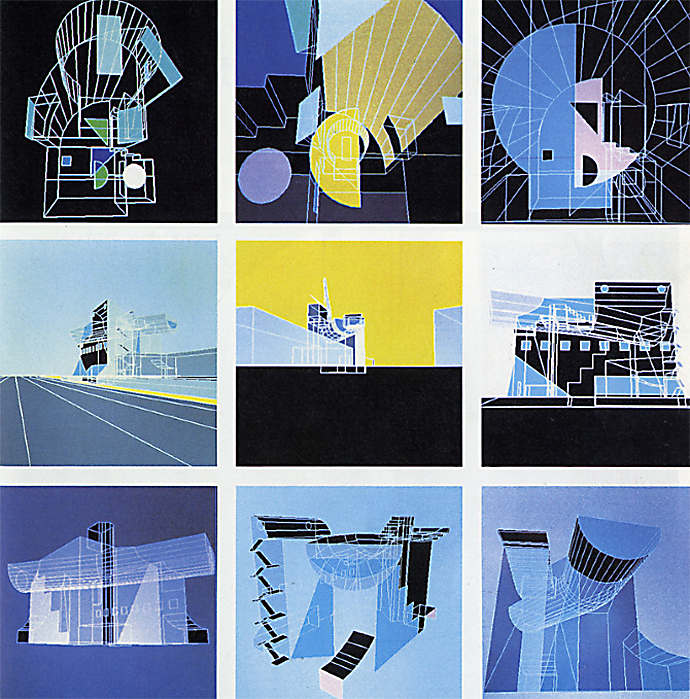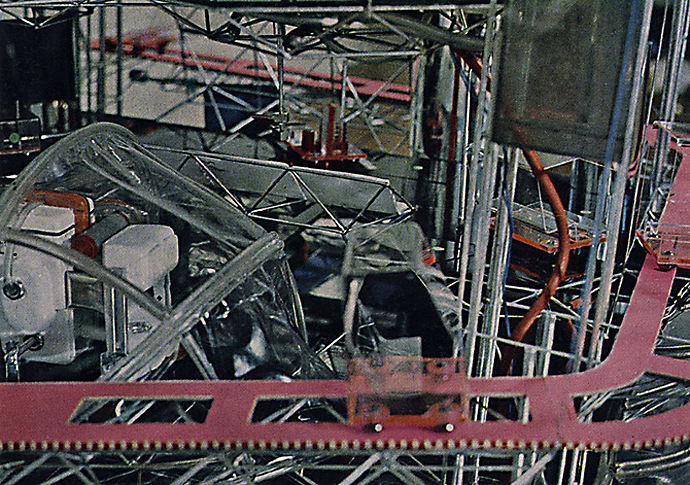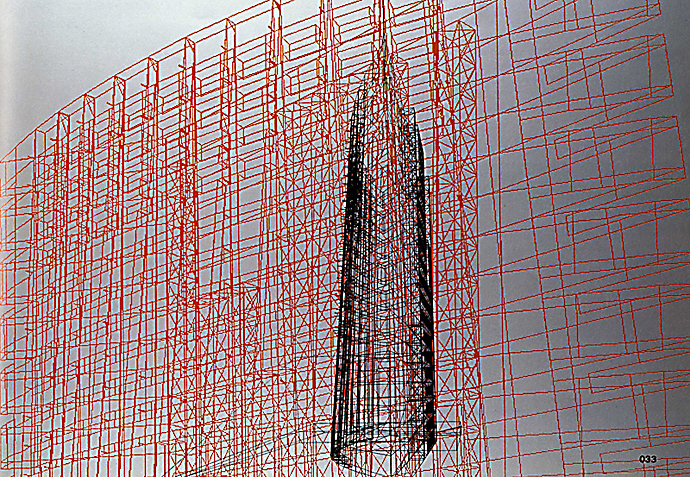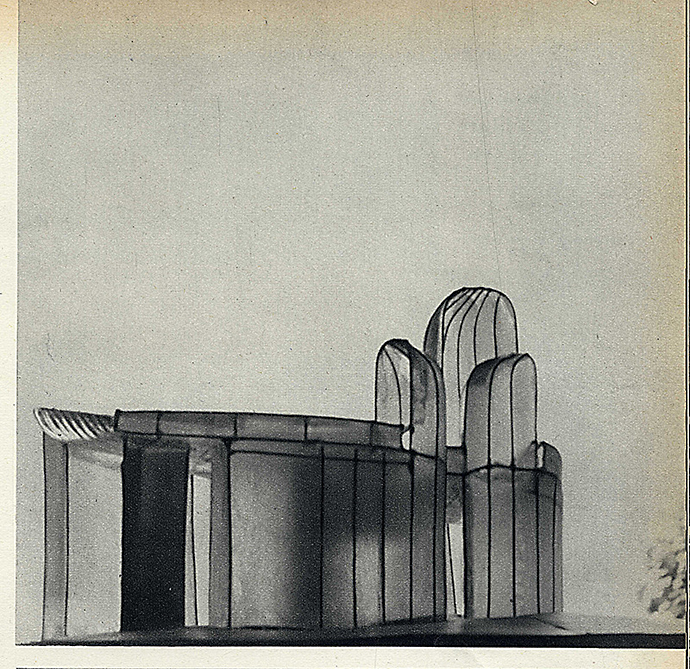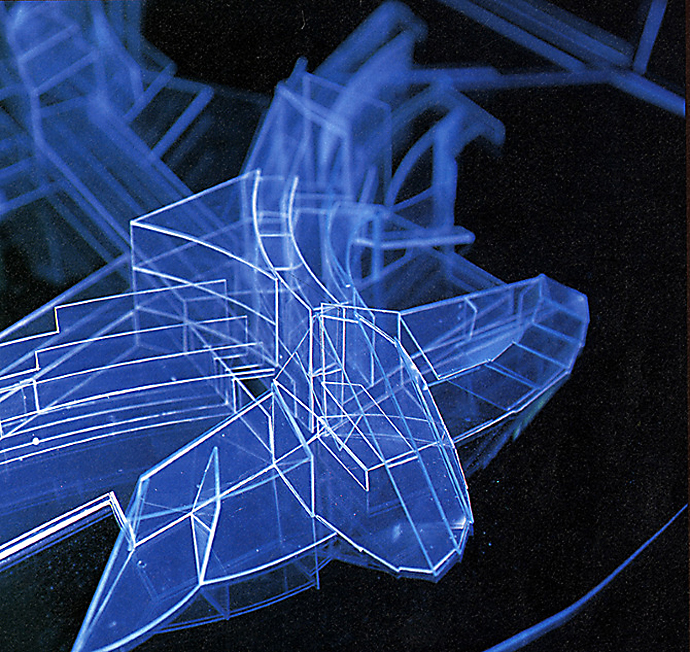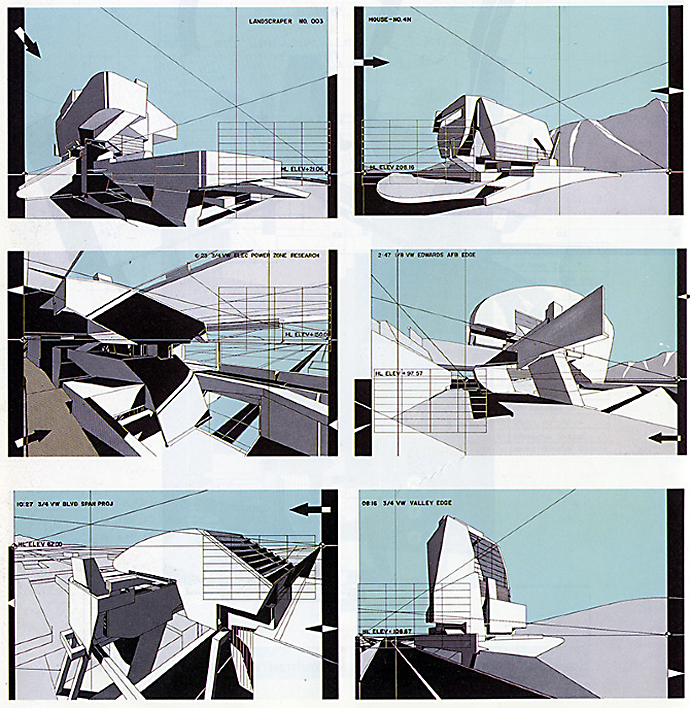from pastelegram.org, June 2011 – April 2014
RNDRD:
Wireframe Aesthetic
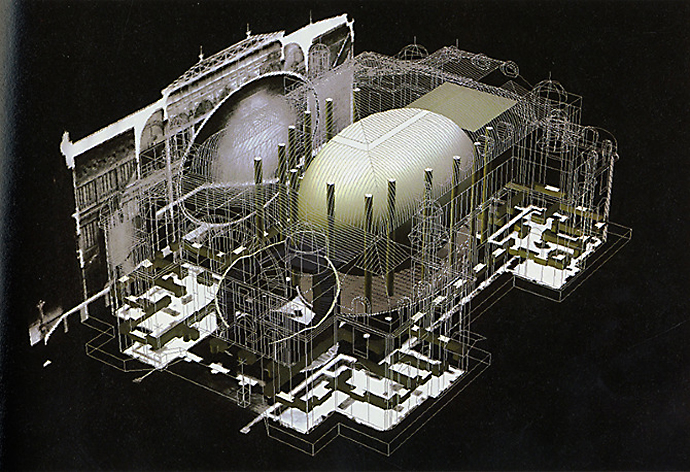 Tadao Ando. SD 300 September 1989: 15.
Tadao Ando. SD 300 September 1989: 15.
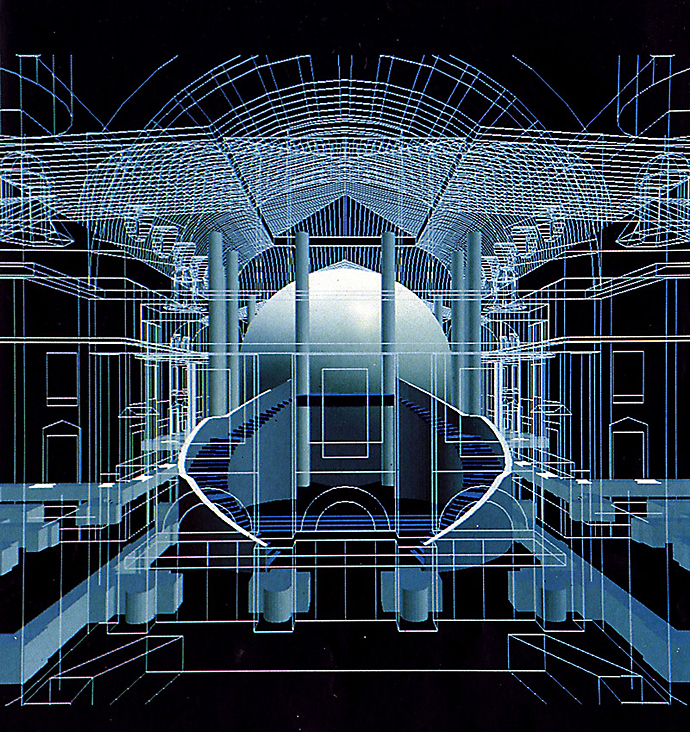 Tadao Ando. L’Architecture D’Aujourd’Hui 268 April 1990: 147.
Tadao Ando. L’Architecture D’Aujourd’Hui 268 April 1990: 147.
Interestingly, many of these characteristics were also common in non-computer rendering from the time. In fact, the wireframe as a design idea appears in architecture well before and during the onset of the microcomputer revolution.
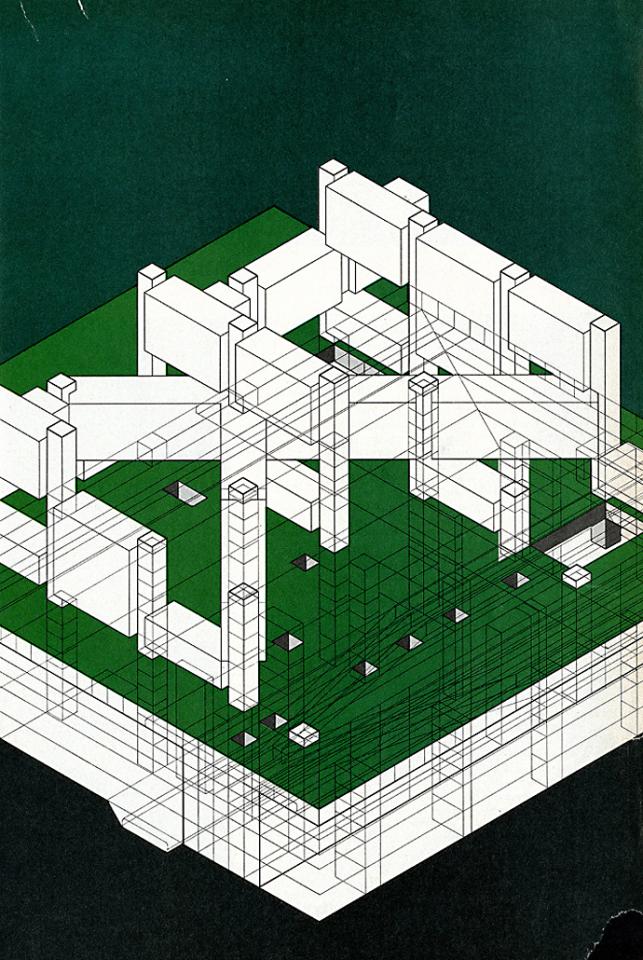 Gunnar Birkerts. Progressive Architecture 54 Mar 1973: 73.
Gunnar Birkerts. Progressive Architecture 54 Mar 1973: 73.
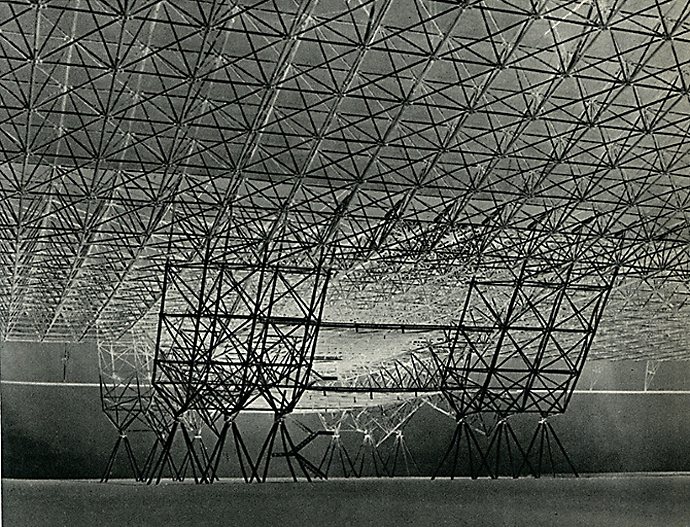 Conrad Wachsmann. Domus 302 Jan 1955: 5.
Conrad Wachsmann. Domus 302 Jan 1955: 5.
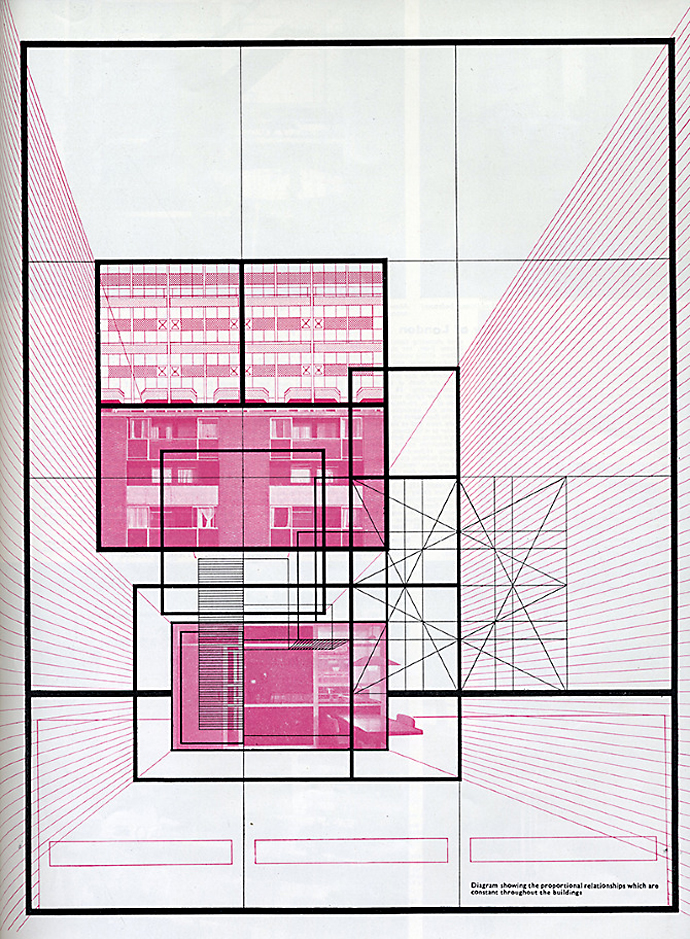 Chamberlin Powell Bon. Architectural Design 26 September 1956: 297.
Chamberlin Powell Bon. Architectural Design 26 September 1956: 297.
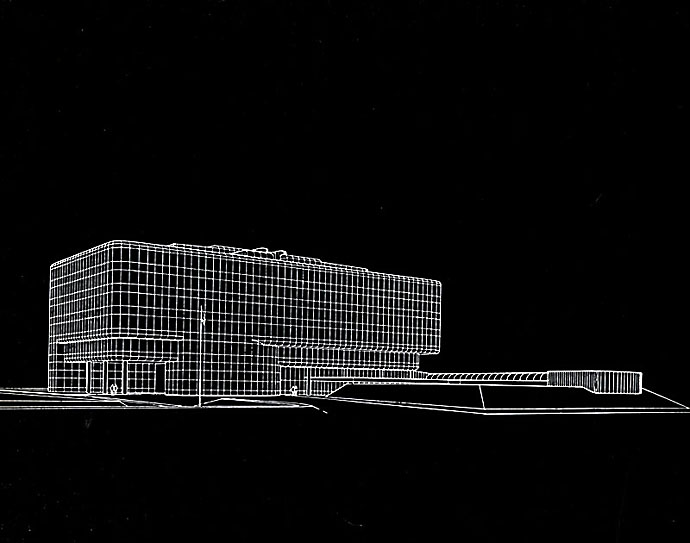 Cesar Pelli. Domus 468 Nov 1968:18.
Cesar Pelli. Domus 468 Nov 1968:18.
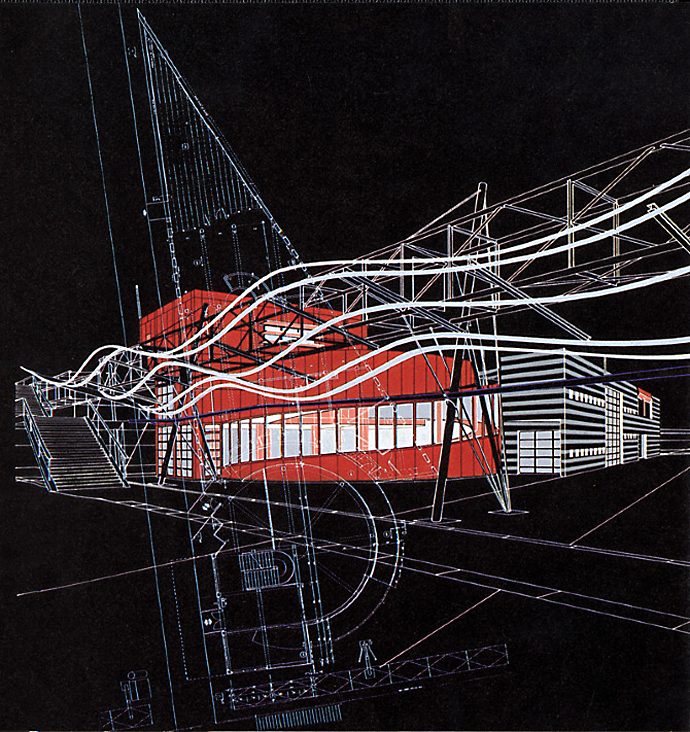 Bernard Tschumi. A+U 216 Sep 1988: 54.
Bernard Tschumi. A+U 216 Sep 1988: 54.
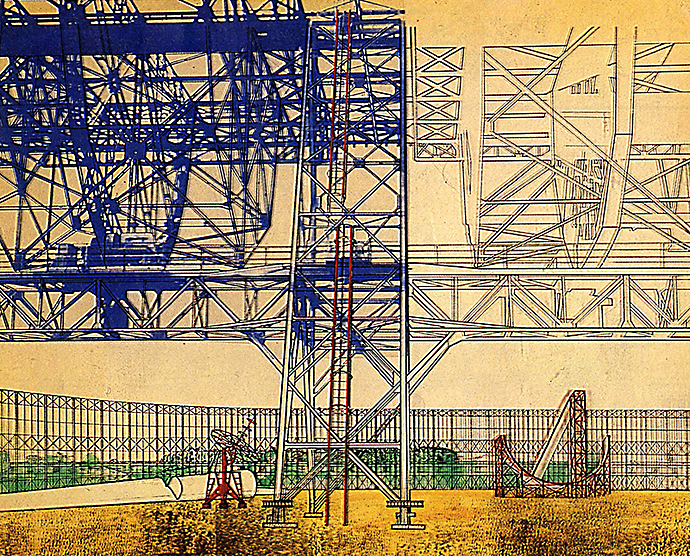 Soria and Lezenes. L’Architecture D’Aujourd’Hui 231 Feb 1984: 52.
Soria and Lezenes. L’Architecture D’Aujourd’Hui 231 Feb 1984: 52.
Like the wire armature under a plaster sculpture or the steel frame of a skyscraper, the wireframe symbolizes the idea of pure structure.
Like the scaffolding and tower cranes that occupy the city, the wireframe symbolizes impermenance, revolution and dynamic living.
Like the perfect sketches we make on napkins to sell ideas to each other, the wireframe is neither vague nor clear. Rather it abstracts ideas just enough to summon infinite interpretations.
The rendering embodies the essential design idea. The highest aspiration of the architect is to have the finished building reach the level of clarity of a perfect rendering, in terms of its ability to convey an idea.
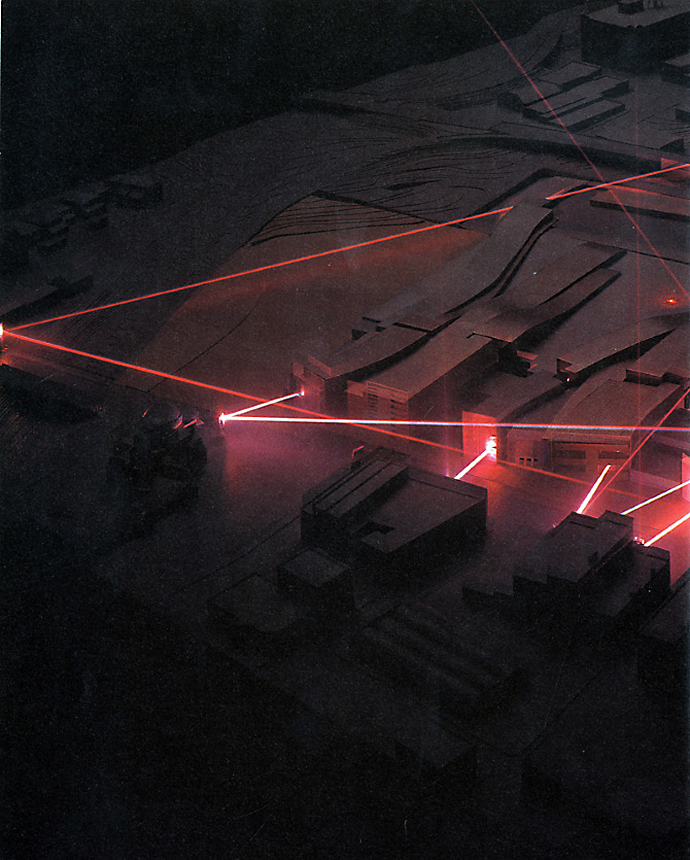 Peter Eisenman. A+U 232 Jan 1990: 150.
Peter Eisenman. A+U 232 Jan 1990: 150.
This article’s publication coincides with the re-launch of rndrd.com, a frequently-updated online image archive of 20th century architectural renderings culled from out-of-print academic and trade journals.
- 1. The most important developments emanated from the aeronautical and automotive industries and well as from important research programs at MIT with Steven A. Coons, at the University of Utah under Ivan Sutherland, and at Cornell University with Donald Greenberg. See Donald Greenburg's articles "Computers in architecture" in Scientific American (May 1974) and "The coming breakthrough of computers as a true design tool," in Architectural Record (September 1984); Alan Kay's first-hand recollection of the development of the Graphic User Interface in his video Doing with Images makes Symbols (1987).
